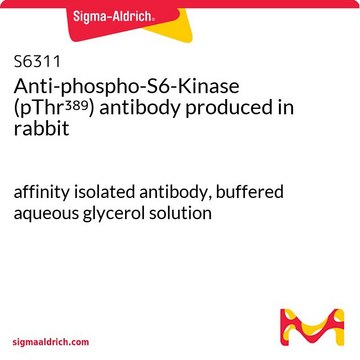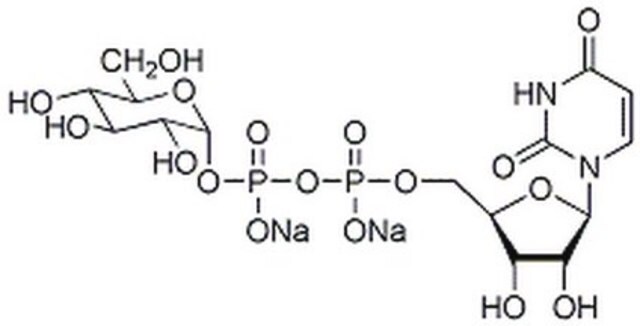S6436
Anti-phospho-S6-Kinase (pThr421/pSer424) antibody produced in rabbit
affinity isolated antibody, buffered aqueous glycerol solution
Sinonimo/i:
Anti-phospho-p70S6K (pThr421/pSer424)
About This Item
Prodotti consigliati
Origine biologica
rabbit
Livello qualitativo
Coniugato
unconjugated
Forma dell’anticorpo
affinity isolated antibody
Tipo di anticorpo
primary antibodies
Clone
polyclonal
Stato
buffered aqueous glycerol solution
Reattività contro le specie
mouse, rat, human
tecniche
immunoprecipitation (IP): 1:250
western blot (chemiluminescent): 1:1,000
N° accesso UniProt
Condizioni di spedizione
wet ice
Temperatura di conservazione
−20°C
Informazioni sul gene
human ... RPS6KB1(6198)
mouse ... Rps6kb1(72508)
rat ... Rps6kb1(83840)
Categorie correlate
Descrizione generale
Anti-phospho-S6-kinase (p70S6K) (phosphothreonine 421/phosphoserine424) detects p70 S6 kinase and p85 S6 kinase only when activated by phosphorylation at Thr421/Ser424 and does not cross-react with other phosphoylated protein kinases.
Specificità
Immunogeno
Applicazioni
Stato fisico
Esclusione di responsabilità
Non trovi il prodotto giusto?
Prova il nostro Motore di ricerca dei prodotti.
Codice della classe di stoccaggio
10 - Combustible liquids
Classe di pericolosità dell'acqua (WGK)
WGK 2
Punto d’infiammabilità (°F)
Not applicable
Punto d’infiammabilità (°C)
Not applicable
Scegli una delle versioni più recenti:
Possiedi già questo prodotto?
I documenti relativi ai prodotti acquistati recentemente sono disponibili nell’Archivio dei documenti.
Il team dei nostri ricercatori vanta grande esperienza in tutte le aree della ricerca quali Life Science, scienza dei materiali, sintesi chimica, cromatografia, discipline analitiche, ecc..
Contatta l'Assistenza Tecnica.







